Bone Cancer - Traditional Chinese Medicine Treatment
Information provided/updated by: Professor Sun Feng,
Clinical Professor of Traditional Chinese Medicine,
School of Chinese Medicine, Hong Kong Baptist University
Introduction:
In this article, Professor Sun Feng introduces us to how traditional Chinese medicine treats bone cancer.
A. Overview (including the use and differences of organs, systems, traditional Chinese medicine and Western medicine terminology)
B. Causes/Symptoms/Diagnosis
C. Treatment
A. Overview (including the use and differences of organs, systems, traditional Chinese medicine and Western medicine terminology)
Bone tumors are a general term for tumors that occur in the skeleton or its associated tissues (blood vessels, nerves, bone marrow, etc.). It is a neoplasm (tumor) formed by abnormal proliferation of local tissue cells under the long-term, continuous, and excessive action of various carcinogenic factors in the skeleton or its associated tissue cells. Like tumors in other body tissues, its exact cause is unknown; bone tumors can be benign or malignant, and there is also a type of lesion called tumor-like lesions. Primary bone tumors are more common in adolescents, while metastatic cancers are more common in middle-aged and elderly people.
Traditional Chinese medicine has records of diseases such as "tumor", "cancer", and "rock" in ancient literature. Due to historical conditions and the level of technology at the time, it was difficult to name tumors in deep tissues as "tumor" and "cancer".
Modern bone tumor studies developed rapidly after the clinical use of X-rays and microscopes. It should be pointed out here that the term "bone cancer" for malignant bone tumors (folk term) is not standardized. The International Health Organization has clear regulations on the naming of tumors. That is, benign tumors are added with the word "tumor" after XXX tissue. Such as: lipoma, fibroma, osteoma, etc.; malignant tumors originating from mesenchymal tissue (connective tissue, muscle tissue, bone tissue), add "sarcoma" after XXX tissue. Such as: osteosarcoma, chondrosarcoma, synovial sarcoma, fibrosarcoma, etc.; malignant tumors originating from epithelial tissue are added with "cancer". Such as: skin cancer, stomach cancer, esophageal cancer, cervical cancer, etc.
B. Causes/Symptoms/Diagnosis
The exact cause of bone tumors is still not fully understood to this day. Currently, scholars agree that the causes of tumors are multifaceted, which can be summarized into seven categories: physical, chemical, biological, genetic, hormonal, nutritional, and immune factors. Traditional Chinese medicine believes that when the body's healthy qi is weak, the body's water-dampness, phlegm, static blood, and heat toxins cannot be metabolized and dissipated normally, and they accumulate and knot to form tumors.
C. Treatment
Regarding the treatment of bone tumors, benign bone tumors grow slowly and can be cured after complete removal. Malignant bone tumors, although there are many treatment methods available, such as surgical treatment, radiation therapy, chemotherapy, immunotherapy, traditional Chinese medicine treatment, etc., the effects are not satisfactory, especially for primary malignant bone tumors.
Traditional Chinese medicine treatment of bone tumors, for enhancing physical fitness, improving disease resistance, improving overall function and visceral function, tonifying qi and blood, attacking and discharging tumor toxins, all have good effects. Therefore, the combination of traditional Chinese medicine and Western medicine's surgery and radiotherapy, chemotherapy and other treatments, if handled properly, even late-stage cases can improve the quality of life and prolong life. This method of combining Chinese and Western medicine treatment has gradually gained recognition from many scholars and the public. Therefore, the treatment of bone tumors, especially the treatment of malignant tumors, should adopt a comprehensive treatment method combining Chinese and Western medicine based on syndrome differentiation according to specific conditions to improve the curative effect.
In reality, a large amount of clinical and experimental research has proven that the effects of many drugs are related to enhancing the body or inhibiting immune responses. For example, ginseng and Ganoderma lucidum can increase the number of lymphocytes and white blood cells, and Xianling spleen can increase the number of thymus-dependent cells (T cells). Hedyotis diffusa, Prunella vulgaris, Houttuynia cordata, Pueraria lobata, Myrica rubra root, Lonicera japonica, Scutellaria baicalensis, Coptis chinensis, Rheum palmatum, and Salvia miltiorrhiza all have the effect of stimulating the proliferation of the reticuloendothelial system and enhancing its phagocytic function. Ginseng and viper can promote antibody production. Astragalus has a promoting effect on the induction of virus interferon, which can interfere with the growth of cancer viruses or transformed cells, thereby achieving the purpose of treating tumors. The treatment of tumors with Chinese medicine from an immunological perspective is extremely rich and awaits further exploration, sorting, and improvement.
(February 2022)




